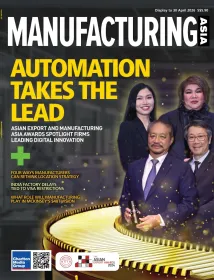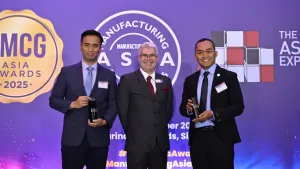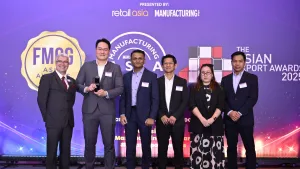How human expertise is driving Industry 5.0 in manufacturing
By Sumeet PuriReal-time data helps manufacturers shift from part-to-product views to real-time, human-centric operations.
From 3D printing to AI, manufacturing processes are in the crosshairs of change. And now, for the first time, the technology is there to give manufacturers the power to view their processes not from the part to the product with all the intervening disconnects, but from the product to the part, in real-time. This seismic shift is getting manufacturers, their workers, and their processes operating harmoniously and in real time. And it takes people too!
The human resurgence in manufacturing
There’s been a dramatic evolution in manufacturing data exchange and it’s nearing its full transformative potential. Rewind to Industry 3.0, when factories first introduced connectivity via centralised enterprise resource planning (ERP) monoliths – laying the foundation for integrating data movement.
Industry 4.0 marked a shift to modular ERP systems, enabling real-time data exchange between Information Technology (IT) and Operational Technology (OT) systems, including Manufacturing Execution Systems (MES), SCADA systems, and fault detection.
Now, we are transitioning to Industry 5.0, which builds on Industry 4.0 smart technologies whilst emphasising a sustainable, human-centric, and resilient manufacturing approach. According to a Boyden report, organisations in Asia Pacific recognise human works as central to this shift, balancing artificial intelligence (AI)-driven automation with human collaboration. Achieving this requires a technical balance, where real-time data empowers frontline workers to make critical decisions.
New approach to data exchange
Imagine a world where business operations run without bottlenecks – not just on the factory floor, but enterprise-wide. What if multiple systems managing front- and back-office manufacturing were seamlessly connected?
This means securely linking OT and IT systems in real-time across multiple sites via cloud-enabled streaming. Operational systems like MES, Programmable Logic Controllers, SCADAs, OPC Unified Architecture (OPC UA) can seamlessly connect with Master Data, Product Lifecycle Management (PLM), Customer Relationship Management (CRMs), and Incident Management systems from SAP, Salesforce, and more.
As AI reshapes factory operations, integration must evolve. To enable Industry 5.0, we need to think differently.
The birth of a manufacturing event mesh
This requires thinking about integration in a modern way. Rather than using traditional architecture, where a centralised software component performs integrations between applications, we need to evolve to a loosely coupled event-driven approach to moving data. This is the foundation of Industry 5.0 as far as its enablers are concerned.
One application publishes messages or events, and other applications receive them. As new applications or devices get added, data is instantly received – enabling seamless scaling. This allows manufacturers to extend this data movement between devices and sensors, so all kinds of sensors can publish information or subscribe to information.
For example, a production line going down. This is an event on the OT side of the house. Which customers and what elements of the supply chain are affected can only be determined by correlating this OT event with all those other IT systems – ERP, CRM, Transport Management, Logistics etc. Imagine streaming the event “production line is down” in real-time to the IT systems in a one-to-many manner and the visibility and real-time action this brings.
An event mesh is born. An event mesh acts as a universal data fabric, seamlessly connecting IT, OT, and AI systems across plants and logistics. It enables real-time governance and understanding of all events.
Real-time is critical, as events are instantaneous “occurrences” across IT and OT. An event mesh routes these occurrences in real time, guaranteed to all applications and systems that are interested and “tuned” in. Applications are natively connected to the event mesh, such as SAP, and OPC UA using MQTT, or they connect via micro-integrations, which are lightweight connectors to allow legacy applications to connect to the mesh to produce or consume events.
AI and the metaverse
The industrial metaverse is revolutionising production floor processes through data-driven digital twins, model simulations, and data analytics, an EY report said. Nvidia Omniverse exemplifies this shift. However, connecting the metaverse to the physical world in real-time is challenging due to the high costs of continuous AI training.
So how do we integrate AI with real-time data? Agentic AI and Retrieval Augmented Generation (RAG) solve this by leveraging real-time event streams to maintain AI models within the current context. This integration enables manufacturers to better capitalise on AI and metaverse applications.
Event-driven integration–where independent IT components communicate by publishing and subscribing to events– can set up manufacturers to adapt to all these new changes on the factory floor, better capitalise on new technologies such as AI models, or connect to growing industrial metaverse applications in manufacturing. The enabler for AI is an event-driven integration mechanism, providing real-time context to AI in autonomous systems, through something called a “context mesh.”
A context mesh brings together the entire context of an enterprise, serving as the bedrock of AI-based applications – from intelligent assistants to machine language-based recommendation models and deep-learning systems. This becomes the fabric that pushes that real-time context onto these digital twins.
Real-time use cases
Take the example of one leading multinational engineering and technology company that uses event-driven integration to connect its global manufacturing facilities. Specifically, the manufacturer has deployed event brokers in each of its 160 plants, and also in its IT layers on-premise and in the cloud, forming a large interconnected event mesh.
Master data management at scale
With an event mesh, the company has been able to streamline the distribution of huge volumes of product master data across its enterprise.
For instance, global operations produce 7,000 parts per minute and must distribute vast volumes of production master data. This involves sending 6 million messages, three terabytes of information daily, to different plants worldwide. As products scale, data complexity increases.
But with an event mesh, the manufacturer seamlessly shares real-time production master data across all required environments, ensuring reliable connectivity between data centres and factories worldwide.
This company has also deployed AI to reduce error rates to fewer than one defective part per 10 million produced parts. With event-driven integration underpinning model data requirements, it aims to scale further, achieving an error rate of one part per 100 million.
Traditional integration methods are no longer sufficient for Industry 5.0 – real-time data exchange is critical for seamless human-machine collaboration. Event-driven integration unlocks the full potential of AI, automation, and the metaverse on a global scale.
The technology is here – and the human workforce is back!



















